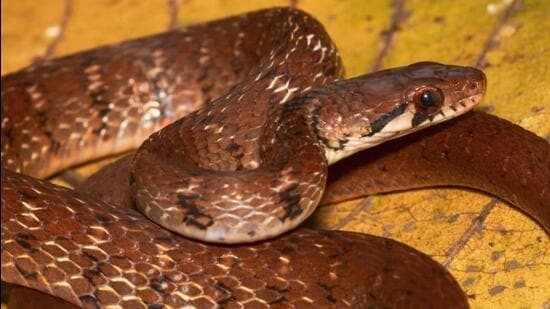Free Courses Sale ends Soon, Get It Now


Free Courses Sale ends Soon, Get It Now



Disclaimer: Copyright infringement not intended.
Context
Details
Genus and Species
Discovery and Habitat
Distinct Features and Naming
Behavior and Diet
Biogeographic Significance
Unanswered Questions and Implications
Conclusion
The discovery of this novel Western Ghats-endemic genus underscores the untapped potential for identifying additional distinct lineages. Notably, this new species not only diverges genetically but also showcases unique morphological attributes, providing valuable insights into the region's biodiversity.
|
PRACTICE QUESTION Q. A new genus and species of colubrid snakes were recently discovered in the Western Ghats of India. Consider the following statements: 1. The new genus is named "Sahyadriophis," derived from the Sanskrit word "Sahyadri" and the Greek word "Ophis." 2. The newly discovered species, "Sahyadriophis Uttaraghati," is also known as the Southern Sahyadri keelback. 3. The snakes of the newly discovered genus primarily feed on frogs and their eggs during the monsoon seasons. Which of the statements above is/are correct? A) Only 1 B) Only 2 C) Only 1 and 3 D) 1, 2, and 3 Answer: C) |
© 2024 iasgyan. All right reserved